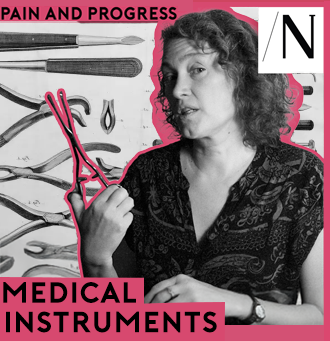Hosted by Lydia Wilson
Directed by Mindi Roscoe
Produced by Mikey Andreasson
Edited by Mindi Roscoe & Mikey Andreasson
In this video, informed by Diane de Vignemont’s essay, “The Medical Instrument Behind 135 Years of Women’s Pain,” Lydia Wilson looks at the controversial history of the Pozzi forceps and the episiotomy, the once-common medical practice that has faced intense scrutiny in modern gynecology.
The Pozzi forceps, a sharp-toothed gynecological clamp, were widely used in the 19th and 20th centuries for procedures like cervical biopsies and insertions of intrauterine devices, or IUDs — often without anesthesia. While the instrument revolutionized certain medical techniques, its painful application and the risk of tissue damage have led to its decline in modern obstetrics and gynecology, though it’s still used in some settings today.
Similarly, episiotomies — surgical cuts made to the perineum during childbirth — were once routine to “prevent tearing.” However, research now shows that episiotomies often cause more harm than good, leading to severe pain, longer recovery times and an increased risk of infection. Despite this, they are still performed at alarming rates in certain medical settings.


